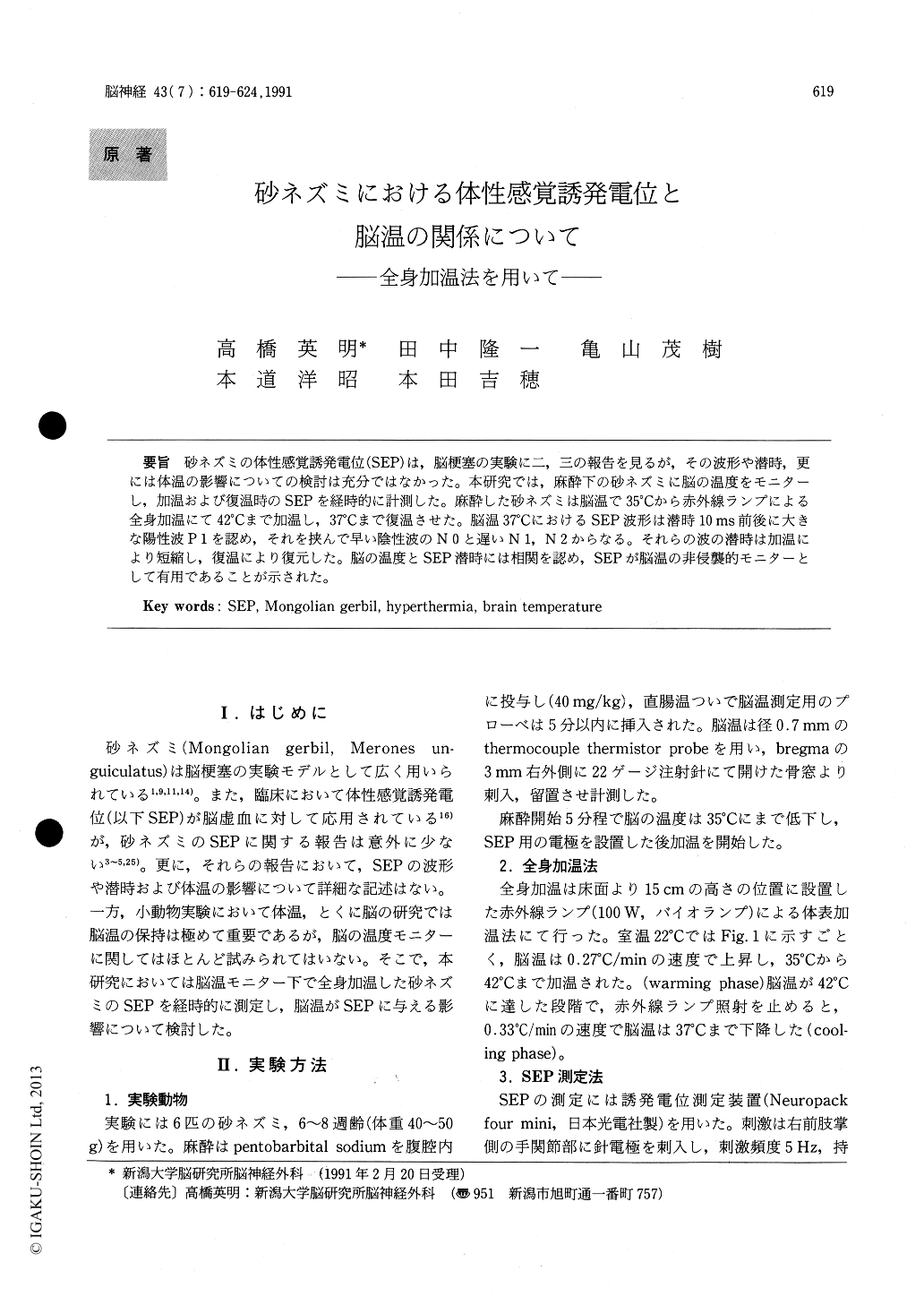Japanese
English
- 有料閲覧
- Abstract 文献概要
- 1ページ目 Look Inside
砂ネズミの体性感覚誘発電位(SEP)は,脳梗塞の実験に二,三の報告を見るが,その波形や潜時,更には体温の影響についての検討は充分ではなかった。本研究では,麻酔下の砂ネズミに脳の温度をモニターし,加温および復温時のSEPを経時的に計測した。麻酔した砂ネズミは脳温で35℃から赤外線ランプによる全身加温にて42℃まで加温し,37℃まで復温させた。脳温37℃におけるSEP波形は潜時10ms前後に大きな陽性波P1を認め,それを挟んで早い陰性波のNOと遅いN1,N2からなる。それらの波の潜時は加温により短縮し,復温により復元した。脳の温度とSEP潜時には相関を認め,SEPが脳温の非侵襲的モニターとして有用であることが示された。
Somatosensory evoked potentials (SEP) have been applied to many men and several animals with cerebral ischemia. But in the Mongolian gerbil, one of the most common models of cerebral infarction,the wave form and the latency of SEP have been studied by few authors. In this report, we studied the effects of hyperthermia on SEP in the gerbil. Six gerbils weighting 40 to 50g were anesthetized and heated with ultra-red ray. Brain and rectal temperatures were continuously monitored. The brain temperature changed from 35℃ to 42℃ during heating, then returned to 37℃ with cooling.
Typical SEP peaks have been labelled according to their positive or negative character and their sequential latency determination. The latency of the major positive voltage deflection, P1, was 9.97± 9. 94ms at 37℃. The negative deflection before P1 has been labelled as NO and the negative waves after P1 were N1 and N2. Peak latency of SEP was significantly reduced gradually during hyperther-mia, and increased gradually with recooling. The correlation between the latency of SEP and the brain temperature was very close.
Our results emphasize the importance of measure-ment of SEP during hyperthermia as a monitor of the brain temperature and during experiment for maintenance of the body temperature at 37℃.

Copyright © 1991, Igaku-Shoin Ltd. All rights reserved.


